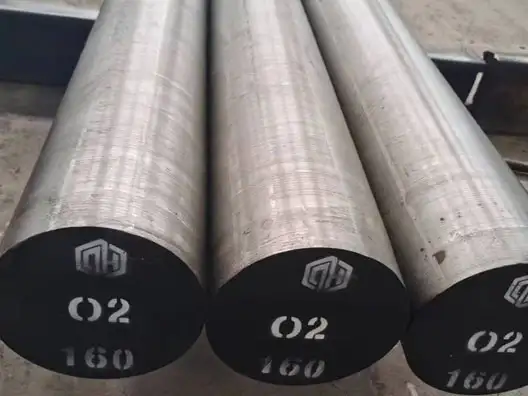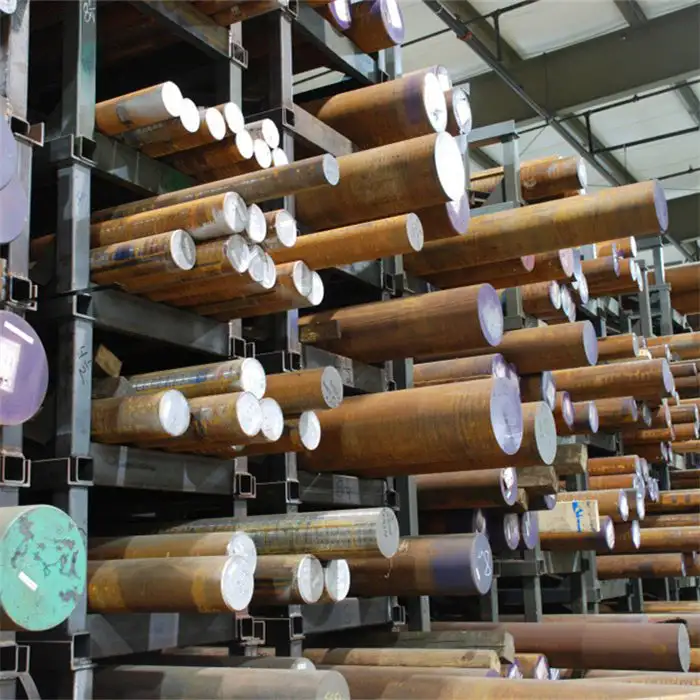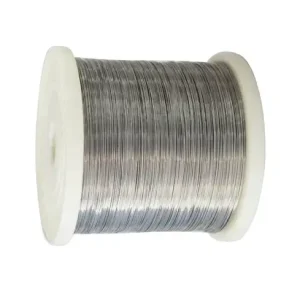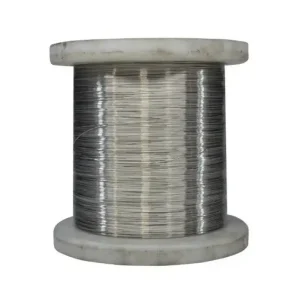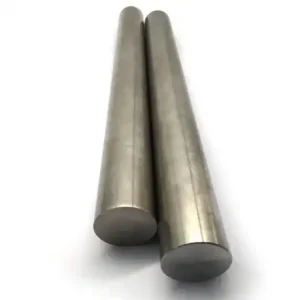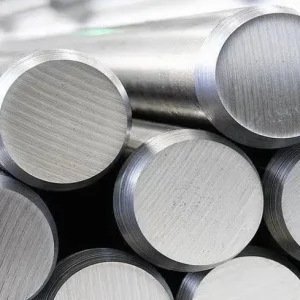O2 tool steel (AISI O2 / DIN 1.2842 / 90MnCrV8) is a low-alloy, oil-hardening cold-work steel optimized for dimensional stability, high through-hardening and good wear resistance for medium-duty tooling such as punches, shears, blades and mould inserts. For most precision presswork and general tooling where a cost-effective, easy-to-heat-treat material is required, O2 delivers a balanced combination of hardness (up to ~60–63 HRC after quench and temper), acceptable toughness and minimal quench distortion — making it a strong choice where D-series or high-chromium steels would be over-specification.
What is O2 tool steel?
O2 is an oil-hardening, cold-work tool steel originally standardized in AISI/SAE tool steel families. It sits among the “O” group (oil-hardening) along with O1 and other oil-hardening grades. Compared with plain carbon tool steels, O2 contains small alloy additions (notably manganese and vanadium variants in European designations) that increase hardenability and refine grain size. The result is a grade that achieves high hardness after quench, holds a good cutting edge and produces relatively low distortion during heat treatment.
When to choose O2 (practical selection rules)
Choose O2 when:
-
dimensional control during quench is important, but extreme wear resistance is not required;
-
you need a cost-effective tool steel for light to medium stamping, blanking, cutting blades, reamers or mould inserts;
-
heat treatment facilities can perform oil quench and temper cycles;
-
you require an uncomplicated, widely-available grade with known equivalents in European and Japanese numbering systems.
Avoid O2 when service will involve sustained high temperatures (use hot-work grades) or extremely abrasive conditions (consider D2 or high-Cr martensitic grades).
Chemical composition (typical ranges)
The following table consolidates commonly published nominal composition ranges for AISI O2 / DIN 1.2842 / 90MnCrV8 (values from manufacturer datasheets and industry datasources — treated as nominal design ranges):
| Element | Typical range (wt%) | Role / short note |
|---|---|---|
| Carbon (C) | 0.85 – 1.05 | High carbon content enables high hardness and edge retention. |
| Silicon (Si) | 0.15 – 0.35 | Deoxidizer, contributes slightly to strength. |
| Manganese (Mn) | 0.70 – 1.50 | Improves hardenability and tensile strength. |
| Chromium (Cr) | 0.20 – 0.80 | Small amounts increase hardenability and temper resistance. |
| Vanadium (V) | 0.05 – 0.30 | Carbide former — refines grain and improves wear resistance. |
| Molybdenum (Mo) | ≤ 0.30 | When present increases hardenability (minor in some specs). |
| Phosphorus (P) | ≤ 0.03 (max) | Impurity limit. |
| Sulfur (S) | ≤ 0.03 (max) | Impurity limit; lower is preferable for toughness. |
Notes: Published datasheets and manufacturer PDFs show some variation (European 90MnCrV8 naming emphasizes Mn-Cr-V balance). Exact chemical limits should be confirmed on mill certificates for any critical procurement.
Mechanical and physical properties (typical, annealed and hardened)
Below are consolidated, practical property figures you will see on vendor datasheets and materials databases. Properties change substantially with heat treatment — the values below reflect commonly published annealed and quenched/tempered conditions.
| Property | Annealed / soft (typ) | Hardened & tempered (typ) | Units / notes |
|---|---|---|---|
| Hardness (annealed) | ~180–230 HB | After quench & temper: 56–63 HRC (depending on temper temp). | Rockwell / Brinell |
| Tensile strength (Rm) | ~600–900 | Upwards of 1200–2000 MPa depending on heat treat | Values vary with tempering |
| Yield strength (Rp0.2) | ~400–600 MPa | — | vendor-specific |
| Elongation (A) | ~10–16% | Typically low after hardening (2–8%) | |
| Impact / toughness | Moderate | Moderate; better than simple carbon steels because of small V addition | |
| Density | ~7.80–7.85 | — | g/cm³ |
| Thermal expansion | ~11–12 ×10⁻⁶ /°C | — | 20–100 °C typical |
Heat-treatment behaviour (summary): O2 is oil-quenched from the austenitizing temperature to achieve martensitic structure. Its relatively high carbon and alloy balance allow good hardenability with moderate tempering stability. Expect some drop from peak hardness with higher temper temperatures; tempering at 200–300 °C keeps high hardness, while 400–550 °C progressively lowers HRC for increased toughness.
Standards, specification, and equivalents
O2 is referenced across several systems. Verify the exact supplier designation on the mill certificate when ordering.
-
AISI / SAE (United States): O2 (often referenced under ASTM A681 for tool steels).
-
DIN / EN (Europe): 1.2842 commonly maps to O2; sometimes marketed as 90MnCrV8.
-
JIS (Japan): SKS31 and related SKS designations are often cited as local equivalents; check exact JIS table for cross reference.
-
GB/T (China): Tool-and-mould steel classification and supply requirements are in GB/T 1299; Chinese suppliers commonly list O2 as 1.2842 / 90MnCrV8.
-
ISO: ISO 4957 is the international tool-steel classification standard and covers nomenclature and requirements; consult ISO 4957 for formal mapping.
Common cross-references: O2 ≈ DIN 1.2842 ≈ 90MnCrV8 ≈ (sometimes shown as) 9Mn2V or 90MnV2 in vendor trade names. Exact chemistry differs slightly by region and mill process — always request chemical certificate and mechanical test report.
O2 tool steel specifications (typical supply forms & stock ranges)
Manufacturers and distributors commonly supply O2 in the following shapes and stock sizes:
| Product form | Typical stock size range (common) | Notes |
|---|---|---|
| Round bar | Ø 8 mm – 350 mm | Precision ground or hot-rolled, depending on supplier. |
| Flat / Flat bar | Thickness 2 mm – 300 mm; width up to 800 mm | Plate supply can be limited; suppliers often supply cut plates. |
| Square bar | 6 mm – 200 mm | Common for small tooling components. |
| Forgings / rings | Customer-specific | For larger dies and heavy tooling. |
| Ground blanks | Custom | Precision ground to tight tolerances for gauges and dies. |
Specification notes: O2 is typically supplied in the annealed condition for ease of machining. Surface finishes may be rough-turned, bright-drawn, ground or with mill scale depending on purchaser requirements. Check ASTM A681 and ISO 4957 product-condition clauses when ordering for critical tolerance work.
Metal working & metal moulding processes (manufacturing notes)
O2 is used in typical toolmaking workflows. Key process considerations:
-
Machining (before hardening): In the annealed state O2 machines reasonably well — turn, mill and drill using standard carbide tooling. Avoid excessive cutting heat to prevent work-hardening of small features.
-
Forging & forming: Pre-heat and forging practices follow standard tool-steel procedures; final forging + normalized cycles help refine structure. O2 has moderate forgeability compared to low-alloy steels; heat control avoids decarburization.
-
Heat treatment: Austenitize per supplier recommendation (typical austenitizing temps in the 760–820 °C range depending on chemistry), oil quench to avoid cracking, then temper to required hardness/toughness. Always test representative coupons for desired HRC and microstructure.
-
Surface treatments: Depending on application, nitriding or PVD coatings can be applied to extend life; however, coating adhesion and pre-hardening condition must be considered.
-
Moulding / die fitting: For mould inserts and cold dies, final finishing is done after hardening by grinding; remember hardening can change dimensions slightly, so plan for shrinkage and final grinding allowance.
Practical tips: To minimize quench distortion when producing precision gauges or dies, use uniform section thickness, control austenitizing soak times, and use fixture supports during quench. O2’s relatively low distortion is one reason it remains popular for small, precision tooling.
Typical applications
O2 is commonly used for:
-
Blanking and forming dies for sheet metal (up to moderate thickness).
-
Shear blades for paper, plastic and thin metal.
-
Plastic mould inserts and mould components where abrasion is moderate.
-
Cutting tools and knives for light to medium duty, small circular cutters and trimming blades.
-
Precision measuring plates, gauges, micrometer screws and fixtures that require stable dimensions after heat treatment.
Sizes, weights and machining allowances (practical table)
Below is a sample quick-reference showing approximate weights for commonly stocked rectangular/round formats. Use this for logistics/estimating only; always confirm with supplier drawings and mill certificates.
Round bar weight formula reminder: Weight (kg/m) = (π/4) × D² (mm²) × 7.85 × 10⁻⁶
| Stock form | Example size | Approx. weight (kg/m) |
|---|---|---|
| Round bar | Ø 20 mm | 2.47 kg/m |
| Round bar | Ø 50 mm | 15.4 kg/m |
| Round bar | Ø 100 mm | 61.7 kg/m |
| Plate | 1000 × 1000 × 10 mm | 78.5 kg (per sheet) |
| Plate | 2000 × 1000 × 20 mm | 314 kg (per sheet) |
Machining allowance: For hardened final pieces, plan finishing/grinding allowances per ISO 4957 guidance and supplier recommendations. Typical allowances before final heat treat grinding: 0.5–2.0 mm surface material depending on finish requirement.
O2 Tool Steel Price comparison 2025
Important: tool-steel prices are volatile and vary by supplier, purchase volume, finish, and global raw-material costs. The table below is a procurement snapshot compiled from published Chinese supplier FOB/FOB-like listings and regional market indicators in 2025. Use the figures as indicative ranges for budgeting; obtain quotes for firm ordering.
| Region | Typical 2025 indicative price (USD / metric ton) | Notes & sources |
|---|---|---|
| China (factory FOB / large qty) | ~USD 1,000 – 1,900 / t | Chinese mills and trading listings show negotiated FOBs commonly between ~USD 1,000/t and USD 1,800/t for O2 plates/bars in 2025; lower for large, plain bars, higher for ground/precision forms. |
| United States (distributor / domestic supply) | ~USD 2,000 – 3,200 / t (estimate) | US distributors typically list tool steels by quote rather than fixed price; US long-steel base indices (HRC/HR coils) in 2025 suggest domestic base costs higher than China and distributor mark-ups raise final price. Expect higher landed and manufactured costs. |
| Europe (distributor / small orders) | ~USD 1,800 – 3,000 / t | European vendor/stockists often price higher than China for small orders; plate and ground blanks particularly command premiums. Manufacturer import duties, VAT and logistics influence final landed cost. |
How to interpret: Chinese factory prices are often significantly lower for direct factory (FOB) purchase and bulk orders. For project procurement from Europe or the US, factor in distributor margins, inventory availability, and value-added processing. Always request mill test certificates and exact length/finish pricing to compare apples-to-apples.
MWAlloys supply proposition
MWAlloys manufactures and stocks O2 tool steel in China. Our core strengths for global buyers:
-
100% factory price — direct mill/plant pricing without middle-man markup for volume orders; competitive FOB and CIF options.
-
Stock & fast delivery — standard round bars and flat bars in common sizes are held in stock for fast dispatch; custom cuts and ground blanks are processed quickly.
-
Quality & documentation — every shipment includes mill certificates, chemical/physical test data and packing list; ISO-aligned QA processes in place.
-
Supply support — technical selection assistance for heat treatment, recommended tolerances and coating options.
Practical procurement checklist
When ordering O2, ensure your purchase order requests:
-
Exact chemical composition limits and mill certificate (MTC) type 3.1/3.2 or equivalent.
-
Supplied condition (annealed, normalized, bright drawn, ground) and final tolerances.
-
Heat-treatment recommendation for your intended hardness including a representative coupon test.
-
Finish (mill scale removal, surface ground, shot-blasted) and packaging.
-
Quantity, delivery INCOTERM, and expected lead time.
FAQs
-
Q: Is O2 the same as O1?
A: No. O2 and O1 are both oil-hardening tool steels, but O2 generally has slightly higher alloying for better hardenability and less distortion. Check vendor certificates for exact chemistry. -
Q: What hardness can O2 reach?
A: Typical working hardness after quench and temper is in the range 56–63 HRC depending on temper temperature and section size. -
Q: Can O2 be nitrided?
A: Yes; nitriding or PVD coatings are feasible, but surface condition and pre-hardening cycles must be coordinated with the surface treatment vendor. -
Q: Is O2 suitable for high-temperature die work?
A: No. O2 is a cold-work grade; for hot-work or high sustained temperatures, use hot-work tool steels such as H11/H13 families. -
Q: Does O2 distort a lot during hardening?
A: O2 exhibits relatively low distortion compared with some high-carbon steels, which is why it is favored for relatively thin knives, gauges and small dies. -
Q: Alternatives to O2 for longer life?
A: For higher wear resistance consider D2 (high Cr), or for better toughness A2. Selection depends on service mode (impact vs abrasion). -
Q: What surface finish is best for mould inserts?
A: Final ground finish after hardening provides the most predictable mould performance; plated or coated finishes can be used depending on product. -
Q: How to estimate shipped weight for bars?
A: Use the round-bar weight formula shown earlier. Always add packing and pallet weight for logistics. -
Q: Are there export restrictions or tariffs when importing O2?
A: Tariffs and anti-dumping measures vary by destination and occasionally by country of origin. Always check current customs/tariff regulations for the buyer’s country and supplier country. -
Q: What test certificates should I insist on?
A: Mill test certificate (chemical & mechanical), heat-treatment report for sample coupons, and any third-party inspection on request.

